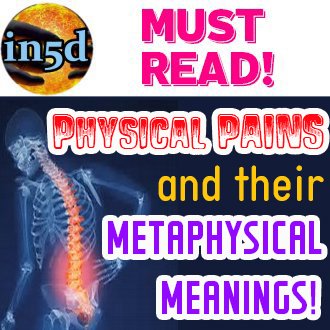The Spiritual Side Of Mathematics
by Rich Fiori,
Contributing Writer,In5D,.com
Why is mathematics so important? Most people are afraid of mathematics because they think they will never understand it or they will never have to use it. Before going into why it’s important for the individual, let’s take a look at some of the history and formation of mathematics.
Babylon
As early as about 6,000 BCE, the Sumerian civilization, Babylon, formulated mathematics using base 60 (we use base 10 mostly). They did this for several reasons. One of which was to chart the heavens, one was for agricultural purposes, and one was for engineering and building structures. It has been discovered they may have defined and used the Pythagorean theorem. They developed division, the concept of a circle, quadratic equations, and the number zero (as primarily a placeholder). We see evidence of their work today in the fact that there are 60 seconds, 60 minutes, and 360 degrees.
Egypt
In about 2,700 BCE, the Egyptians formulated the base 10 system of mathematics. Through their formulation of multiplication, they introduced binary numbers (e.g. 101 = 5). They introduced fractions and series of fractions. They calculated the area of a circle using a simple formula (8/9 x diameter)2 to within 0.99% accuracy. Their value for pi is approximately 3.16049. They knew that 3, 4, and 5 formed a right triangle and they knew the volume of a pyramid.
See also for more detail: http://www.storyofmathematics.com/index.html.
Pythagoras, Plato, and Aristotle
Think of Pythagoras as a group of people rather than just one individual. Then add Plato to that group. They developed the concept of Theory and used words such as Form to describe ideas and ideals. Aristotle took a different approach and developed the Empirical way of thinking. He used Facts and their interdependence to describe experiences. There was both continuity and independence in these two different approaches. This was the establishment of theory and practice as we describe it today. One extraordinary outcome of this dynamism was the Pythagorean theorem, which proved to be useful throughout history. The theorem states that the sum of the squares of the sides of a right triangle is equal to the square of the hypotenuse. The proof of this theorem is both elegant and artistic using a square within a square. The inside square touches the outside square at four points. This simultaneously creates four right triangles surrounding the inside square. It just so happens that the inside square is the square of the hypotenuse. The outside square is the sum of the squares of the sides plus the square of the hypotenuse. One equation depicting this is all that is necessary to arrive at the results.
This fact is used to calculate many right angle problems including things from stairs to getting a square angle on a corner to proving Einstein’s theory of time dilation. Carpenters use the 3 – 4 – 5 method to true a corner. Mark three feet from the corner in on direction then four feet from the corner in the other. Then measure the hypotenuse; if it is five feet, the corner is square. For time dilation the use of the theorem is a little more complicated but once setup, just as easy to solve.
Omar Khayyam
Another person to further mathematics was Omar Khayyam. He noted the dynamic tension between the different approaches and unified them into a single concept. One noted aspect of his writing that remains is the idea of “x” as a variable. In Arabic, x means “thing”. Omar developed the quadratic equations and was responsible for binomial coefficients of expansion; these are also concepts used in college algebra (think Al Gebra) today. Quadratic equations are two dimensional nonlinear equations that depict among other things the trajectory of an object. We all have an intuitive feel for trajectory when we throw a paper ball into a trash can. Several athletes earn a living mastering the trajectory of baseballs, footballs, soccer balls, and basketballs.
Galileo and Copernicus
Galileo Galilei and Nicolaus Copernicus took the quadratic equations et al and defined the solar system. Galileo got it mostly correct using elliptical orbits but Copernicus used round orbits and was disregarded as a consequence. It is important to note that both of them were responsible for defining the motion of moving bodies; however, Galileo ran into a religious group when he questioned the authority of their scriptures. From there he was relegated to house arrest.
Kepler
Johannes Kepler didn’t have the deterrent of religion. He reestablished that the sun is the center of the solar system using the work of Galileo and Copernicus. Kepler furthered the concept of Archetypes (ideas) as central to the treatise of mathematics.
Newton
Isaac Newton made several new advancements to mathematics. Most notable among them were the Calculus and the Principia. The Principia describes the laws of motion and universal gravitation. Newton also developed what is known as co-location polynomial methods that derive polynomial equations from the observed data points.
Gottlob Frega
Frega developed set theory and the principle of quantified predicate logic. This provides the framework for all modern math books. He famously wrote the Grundgesetze of mathematics. His greatest contribution to mathematics was that mathematics is objective rather than subjective. This single principle takes math out of the realm of subjective scrutiny. There is never a discussion about math theory or proofs; a notion that sets math apart from all other sciences.
Russell and Whitehead
Because of Frega’s work, Bertrand Russell and Alfred Whitehead published the foundations of mathematics called Principia Mathematica in an effort to completely define the axioms and rules for all provable forms of mathematics. Finished in 1927, it was a tremendous undertaking. The Principia only covers what’s know as “real numbers” and is know to have some flaws. Also, it did not delve into the subjects of Real Analysis or Geometry.
Negative and Complex Numbers
These two types of numbers are intertwined because of the solutions to cubic and quadratic equations. Without going into detail, the trail of definition for negative and complex numbers starts in Iraq, Greece, and India in the 8th and 9th centuries. Then the information traveled to Italy and France in the 12th through the 19th centuries creating what we know as negative numbers and the beginning of complex number theory.
The easiest and simplistic representation of the complex number concept is x2 + 1 = 0. That is, some number times itself plus 1 is 0. Solving we get that x2 = -1. This is impossible to solve using what we call “real numbers”. Collectively this group of mathematicians defined negative numbers then imaginary numbers and the solution is that x = i (the square root of -1). Now instead of a number “line” we have a number “plane” and everything is multi dimensional.
See also for more details: http://www.math.uri.edu/~merino/spring06/mth562/ShortHistoryComplexNumbers2006.pdf
Chaos Theory
A relatively new field of mathematics is Chaos theory. Chaos Theory is only possible because of computers abilities to solve simultaneous non-linear equations iteratively and in a reasonable timeframe. There are many applied uses for this new mathematics that spread out over every scientific field. An example is the antenna pattern in a smart phone.
Mandelbrot
The advent of the computer provided a way to solve repeatable (iterative) type problems. Benoit Mandelbrot while working at IBM definitively characterized a branch of fractal mathematics by creating the complex recurrence ((((c2 + c)2 + c)2 + c)2 + c)2 + c. If the resultant answer is finite, it is in the Mandelbrot set and becomes the next value of c in the recurrence (iteration). The reason it is a fractal is because we can zoom in (perform more iterations) on any part of the Mandelbrot set to reveal finer and finer detail. The computer does the work. Without going into detail, the colors in a Mandelbrot set represent the number of steps each iteration takes to reach a predetermined neighborhood value, in other words how many steps did it take to reach an acceptable value or approximation (neighborhood).
Why why why
When I taught mathematics at the university level, I got this question from several students frustrated with attempting to understand something so foreign that the question of “why” was tattooed to their faces. They believed that they didn’t need this foreign language in their lives to function adequately and couldn’t understand that it is essential to their deciphering the world in which we live.
In reality, we can’t walk down the street without it. Our brain and nervous system process and convert the 3D world dynamically and in unison with what we enact to provide us a mathematical perspective of our next physical act. Our eyes use Fourier transformations to convert the universe’s hologram into the reality we know. This mathematics is both commonplace and complicated simultaneously. If only one thing is missing or misplaced, the equations are calculated with inaccurate data and we just stepped into a puddle of unknown origin. Mathematics in the brain mind complex creates our 3D images.
Donate to In5D
With over 6,000+ free articles and 1,200+ free videos, any donation would be greatly appreciated!
Much love for your kind donation,
Gregg
It would be nice if we knew this. Also, we are constantly imagining new theorems and increasing the boundaries of pure mathematics. It was once asked: Why study and theorize something that doesn’t exist? Only to find out later that that something does exist and is already explained with mathematics. Mathematics is a universal language, literally. It is the only complete, exacting, and unambiguous language that we have. Even complex number theory has a real-world set of applications, collectively called Complex Analysis.
Unity
The language of mathematics was/is developed as stated above by people from all over the world for at least the last 6,000 years. The nature of mathematics is based on the nature of unity. It all starts with the notion of null (nothingness), the zero point so to speak. It proceeds along the same lines as Taoism. It expands in a complicated layered way. The language itself is completely theoretical in nature, composed of principles and postulates that are changeable. When changed, they create a new mathematical path. For example non Euclidean Geometry creates Projective Geometry, which provides for a point and line at “infinity” by changing just one postulate (that parallel line do not intersect). Additionally, there are countable infinities and uncountable infinities. There are real world 1,000 by 1,000 matrices; that’s 1,000 variables and 1,000 equations.
Discoveries in theoretical mathematics are discoveries about ourselves represented in the most concise language with no extraneous ambiguous information. These discoveries are deep within us. They are a reality unto themselves.
Final Frontier
For theoretical mathematics, there is no final frontier. Like the universe – multiverse, it is ever expanding. As other scientific disciplines overhaul themselves, the scientists use mathematics to represent their new models; sometimes while furthering the sphere of mathematics itself. In the case of particle physics, we have reached a point that theory can be advanced to predict physical phenomena but the experiments cannot be constructed to prove/disprove the predictions. In a sense, particle physics has become at least temporarily a branch of theoretical (which may turn into applied) mathematics.
Why Mathematics
Figuratively and literally, we can’t live without it. It is the foundation for just about everything. Without it, there would be no computers. The very core of a processor, developed by John von Neumann in the 1940’s, uses binary numbers and symbolic logic (called gating networks) to represent alphanumeric characters and to perform binary arithmetic operations. There is a new approach, several researchers are developing, to create quantum computer architectures. They are based on the von Neumann processor architecture, the quantum properties of atoms and light, and the mathematical concept of number bases. This architecture simultaneously shrinks the size of the computer while exponentially increasing its speed. This brings the quantum world into mainstream consciousness.
The mathematics of “entanglement” (Bell’s theorem) will provide all the transmission security we will need. The exponential speed of quantum computers will make all existing computers obsolete over night because of their ability to compute prime numbers quickly. Encryption security was developed using large prime numbers to multiply then divide the data thereby encrypting and decrypting it as necessary. With existing computers, there is almost zero probability of guessing a data point because of the time it takes to generate a large prime number. There is no formula for prime number generation, only the rule that a number is prime if it can only be divided by itself and 1. The time factor goes away when using quantum computers. Computing and guessing is quick, within minutes rather than weeks or months.
With the introduction of quantum computing, we will see more people understand that the universe is different than previously thought; even though this information has been public knowledge for decades.
Our understanding of the universe is directly a consequence of our understanding and our discoveries in mathematics, which has taken over particle physics. We are all mathematicians even if we do not realize it on a conscious level. The very reason emotional responses work so well is because we have carried out the math based on our knowledge of the conditions leading up to and through the subject of interest.
An example
Entropy and karma are proportional regardless of the level in which the entropy is exhibited – thermodynamically or statistically. Everything and everyone creates quantum energy waves at certain frequencies that mix with the quantum waves of the subject or event of focus (there are millions of quantum waves associated with this interaction). The mathematics of each quantum mixing is explained by Schrodinger’s equations; the statistical summary result of which manifests into reality and becomes the next subject or event. There is no separation. In a real sense we are the subject or event and we are its synthesis (i.e. quantum thermodynamic and/or statistical summary). In a real sense, there is no such thing as time but that’s another subject. We manifest our reality individually and simultaneously collectively. Entropy/karma is always a byproduct of any quantum statistical summary because all energy in a system must be accounted for. The mathematical equation is describes the variable conditions and predicts the outcome scenario precisely. This describes thought events as well as 3D events; although, there are no mathematical equations developed for thought events, just the author’s opinion.
Statistics
We see statistics everywhere. One example always present in advertising is “ our product is x% better”. While this may be based on a statistical fact, there is no basis for the statement. Although, the actual basis may be divulged in fine print; it remains hidden in the discourse. The seller wants the consumer to create her/his own definition of what this means through careful selection of conflated juxtaposition of subjects. The seller wants the consumer to leap to an implied conclusion based on several factors. Here are some of the factors. “This product/service is better”for you. “You the consumer came to that conclusion through rational means”. “You need this to live a better life”. “You need this to avoid a fear based conclusion”.
Logic
Unless we understand basic rules of logic and statistical analysis, we are easily trapped into drawing the implied and inferred conclusions. Additionally, we are less likely to research the accuracy of the statements and more likely to use a subjective approach that encourages us to feel comfortable with the implied and inferred conclusions. Just ask yourself why is there fine print that appears with every product or service offered.
Basic logic works this way. The statement that a false premise implies a true or false conclusion is itself a true statement. An example is: “If red were blue then you’re going to hit the lottery”. This statement is true only because red is not blue. What happens is the seller immediately drops the premise and begins to concentrate on the conclusion that “you’re going to hit the lottery”. In a sense, s/he is telling the truth but wants to make us think the conclusion is unconditional. Sellers use a form of this example ubiquitously.
Why Mathematics
Mathematics is the only science that is also a language. The language is the only one that is completely objective and universal (literally). Sure there are conventions but even those are objective. Mathematics is the only science that is completely thought based and as such has no boundaries. It is entropy neutral because every equation can be reduced to its lowest most compact form. There are no ambiguities in mathematics; however, there are problems that cannot be solved (yet).
About the author: Rich has a masters degree in mathematics and maintains hobbies in particle physics and music. He has dedicated his life to finding the truth.
In5D PATREON: Click here to help support our work thru Patreon. Your support is greatly appreciated!!!
Follow In5D on Patreon, Rumble, Telegram, Twitter, Bitchute, TikTok, Instagram, Facebook, YouTube, Gab, and Truth Social
























